Bishop Briggs, Billie Eilish: A New Generation Of MKULTRA?
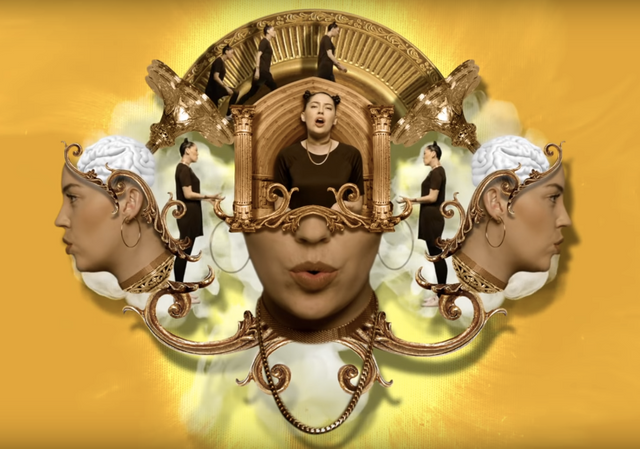
Despite what one might read on some popular websites, ritual abuse and MKULTRA programming are hardly limited to celebrities and popstars. The subject of MKULTRA symbolism in hollywood has been so thoroughly reported (with some examples being more legitimate than others) that it almost seems useless to write about further. Despite this, there is arguably value in discussing such symbolism when it presents itself if a new way, and when it can further inform us as to what ritual abuse and MKULTRA programing entails.
Note: Speculation as to the potential abuse or programming of public figures in this post is not intended to portray them as perpetrators or to conclusively argue that they have been through specific experiences. I am writing this post as an analysis of the symbols they publicly employ, and do not presume to know their history or intent.
Though they differ in age, with Bishop Briggs in her mid-late twenties and Eilish very recently having turned 18, both performers commonly wear baggy boyish clothes and don similar mickey-mouse-like hairstyles (that is, before Briggs shaved hers off).
This type of presentation contrasts strongly with infamous "sex kitten" programming, which has been discussed at length by many websites and bloggers and has been rampant in American pop culture for decades, allegedly from Marilyn Monroe, through to the eras of Madonna, Britney Spears and Beyonce. Discussion of these more "typical" examples of seductive programming-in-public includes the use of animal prints, extreme or hyper-sexualization, and monarch butterflies.
The fact that Eilish and Briggs are not hyper-sexualized can hardly be labelled a "bad" thing, but the degree to which it is a new "trend" among stars that also features dissociative behavior/images/language makes it noteworthy. It is a sad statement about our culture that covering up has become more taboo and unusual than maximal exposure. Sex tapes and nudity used to launch careers have virtually become passe.
Bishop Briggs wearing male-style clothing during a performance:

Eilish and Briggs- whether intentionally or not - employ obvious and subtle ritual abuse references in their work. I will not expound on every example of this, especially in the case of Eilish who in her short career has managed to use so much of this kind of material that it would require an extensive post to account for and discuss it all. However, a few examples from Briggs' and Eilish's work and their potential significance are included below.
Eilish often uses extreme abusive scenarios in her music videos, including one in which she allowed spiders to crawl all over her body and into her mouth. Abuse with spiders, snakes, and other animals is common in ritual abuse.
Meanwhile, Brigg's video for "The Way I Do" appears to be almost entirely composed of dissociative imagery.
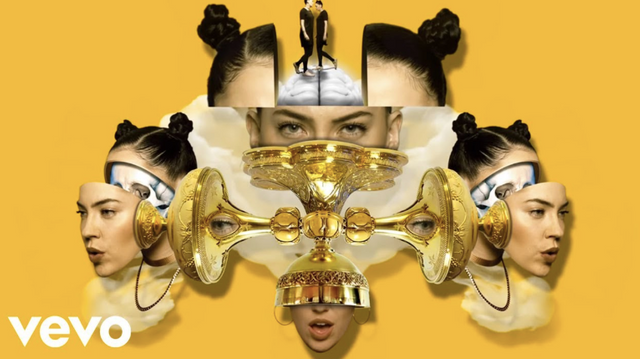
The Gavel, a student-newspaper from Boston College, described Eilish's style:
"Calculatedly creepy, distorted, and dissonant, Billie Eilish’s latest single, “bury a friend,” draws from phobias and twisted thoughts. A horror film in itself, the music video accompanying the song alludes to the demonic: Eilish is pushed and pulled through a dark hallway in jerky movements by bodiless hands, staring into the camera with glossy black eyes. The heavy, percussive bass and staticky synth sounds, along with lyrics like “step on the glass, staple your tongue” and “I wanna end me,” evoke feelings of discomfort and tension, which is exactly the rising artist's objective. “People are terrified of me, and I want them to be,” she said to W Magazine."
"Outfitted in silver chains and all-white clothes, Eilish’s character is evocative of the monster under your bed. Looking deeper, this fabrication of the mind reflects the masochistic and the sadistic... This character is seen in the video for the single “you should see me in a crown,” in which spiders crawl across her face and out of her mouth. Her blank stares imply fearlessness, which seems appropriate for someone so nonconforming and unorthodox."
That even a student newspaper would pick up on the extreme dissociation exhibited by Eilish's "blank stares" is striking.
In survivor accounts of ritual abuse, reversals of all kinds are common: boys turning into women and vice versa, good as bad, pleasure as pain, and etc. Eilish was reported to have said, when describing the creation of the video for When The Party's Over:
"Dude, I bring the most miserable things onto myself. I just do, I don’t know why I do it, but I do it. I just love pain. I’ve always loved pain. I love being uncomfortable.”
In Eilish's song "All the good girls go to hell," God is also referred to as feminine, a reference that monotheists who believe in a patriarchal god-figure would infer as a reversal. Setting the religious aspect of the song aside, the title of the song is in itself a simple reversal of "Good" and "Bad" (good girls being sent to hell).
As previously referenced, the inversion of gender is another reversal commonly employed in ritual abuse. Wearing baggy body-covering clothing is also one common reaction to sexual abuse. In Eilish's case, she has spoken out publicly about her decision to wear oversized clothing, stating that she primarily wanted to avoid body-shaming as well as sexualization. Given that Eilish achieved international stardom at an extremely young age, the instinct to avoid public scrutiny of her body doesn't seem unusual - it comes across as a much more healthy drive than that of starlets who are constantly sexualized in the media. However, if Eilish has also been the victim of ritual abuse, covering up might also stem from an effort to avoid further sexual trauma.
Eilish performed "All the good girls go to hell" with "mickey mouse" style buns and extremely baggy men's clothing:
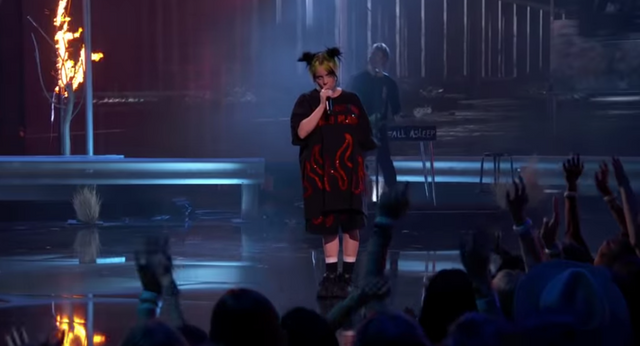
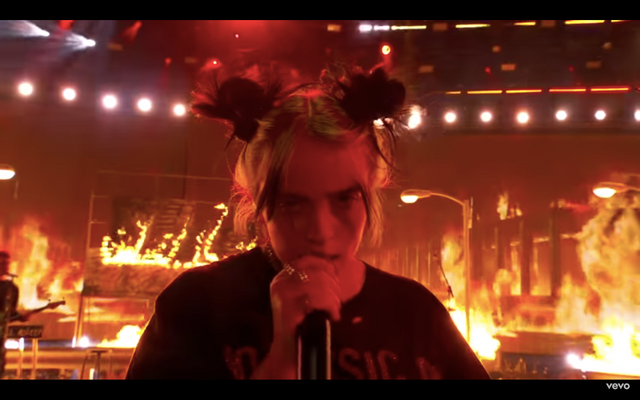
Another potential factor in this kind of dress and presentation includes the creation of (sometimes male) protector personalities in biological girls suffering from dissociative identity disorder (multiple personality disorder).
Eilish often sings from the perspective of a male figure, with lyrics like "I'm a bad guy." Ritual abuse victims are almost universally trained to view themselves as evil, and doing so can eventually create a "protective" alter personality that believes it is evil, to allow it to engage in programmed behavior that would be otherwise intolerable to the "original" personality. By truly believing they are "a bad guy," the trauma of hurting others becomes less intense. In physically female abuse victims, creating an "evil" male alter may provide a protector personality, which is then further programmed for participation with and obedience to the cult/their handlers. By voluntarily making themselves (or an alter) into a "Bad Guy," the SRA victim survives by adopting the maxim that the best defense is a good offense.
In other words, it isn't as simple as a "male" alter, this persona is primarily a protector, often "evil" and is as likely to self-conceptualize itself as a demon or the devil as it is to see itself as male. The resonant statement by Eilish: "I'm a bad guy" is not so much in the gender reversal but in her self-description of being evil. As a ritual abuse survivor, I often described myself as "evil," as a toddler. This "evil" persona makes you feel invulnerable, which is why i recognize what Eilish is doing with the spiders and other uncomfortable stunts. She is in that invulnerable state. If she is indeed a ritual abuse victim, she might have a normal reaction or even phobia of spiders in other alter states. In my case, when i was in that place I could handle snakes and bees without being bitten/stung and without fear, but out of that state I was (and am) phobic of bees and flying insects.
This dynamic can bee seen in (far more sexualized) female celebrities who have openly discussed the existence of one or more male "alter-egos," with the clearest example being popstar Niki Minaj, who publicly discusses the existence of her male alter-ego "Roman Zolanski," whose name appears to be a disturbing play on child-rapist and Hollywood director Roman Polanski.
According to a fan-run wiki page devoted to Minaj: "In the documentary My Time Now, Minaj elaborated that Roman is a crazy boy who lives inside her, who says the things that she doesn't want to say. He threatens to beat people and he's violent. Nicki also said in the documentary that she "[asks] him to leave, but he can't. He's here for a reason. People have brought him out. People have conjured him up now he won't leave." His personality is also very arrogant and insensitive to others."
Minaj's description of Roman (much less his name) clearly identify him as a "violent" perpetrator who has identified with its abusers, who "brought him out." Does this also explain the persona of Billie Eilish?
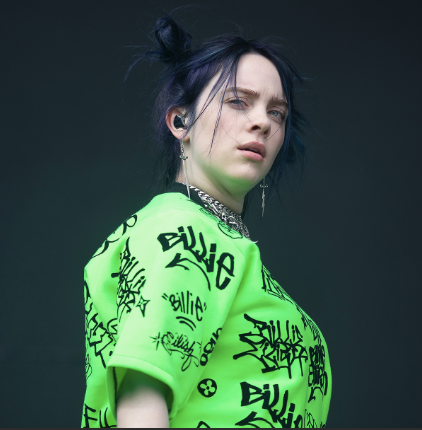
Eilish has publicly acknowledged a fight with depression, that she has been diagnosed with Tourette Syndrome, and has also stated that she and her brother experience synesthesia.
The subject of Disney/Mickey Mouse programming has been covered by various sites and bloggers, so I won't delve into that subject at length here, other than to say that Eilish and Briggs participate in such references. Briggs and Eilish have both sported mickey-mouse style buns, and/or incorporate the symbol into their artistic imagery. Brigg's mickey-mouse haircut is seen below, featuring black and yellow:
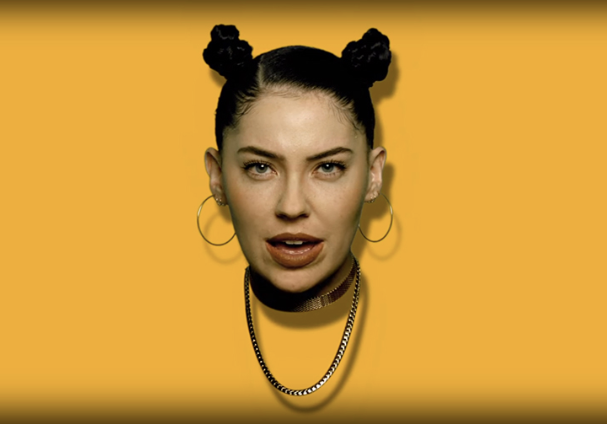
Brigg's album cover directly referencing mickey mouse:

Briggs and Eilish are not the only celebrities to heavily reference Mickey Mouse. As a very directly comparable example, Lady Gaga also appeared in yellow - and black Mickey Mouse attire - in her music video "Paparazzi":
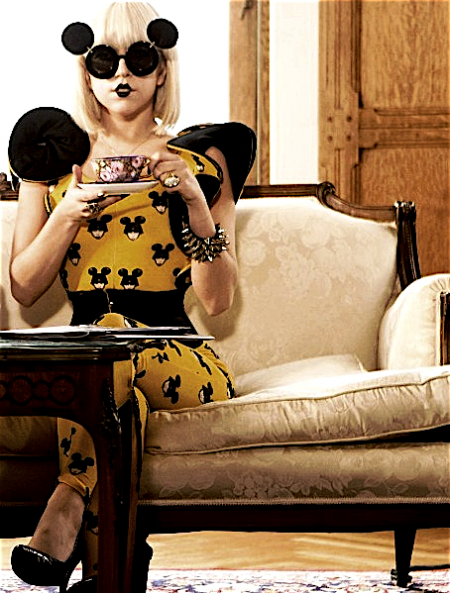
Eilish is apparently also a yellow fan:
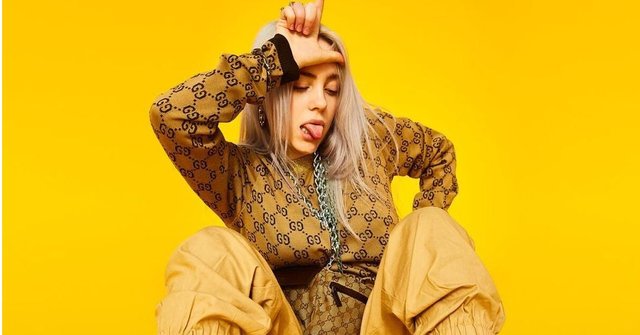
The significance of black paired with yellow and sometimes with mickey mouse is unknown to me, but is nonetheless a striking pattern.
It is noteworthy that Eilish has been able to not only gain but maintain and increase her star-power while dressing in such a casual fashion, given the ridiculous beauty standard in Hollywood etc. In other words: why are singers like Eilish and Briggs being promoted with a "brand" like this? Surely if the producers and executives driving Eilish's career were opposed to her fashion choices, they would have changed by now.

Eilish's mother, Maggie Baird
According to her Wikipedia page, Eilish's parents are both "in the entertainment industry." The entry also states that Eilish was raised in "Los Angeles' Highland Park," that she was home schooled and "joined the Los Angeles Children's Chorus at age eight." Eilish composes music with her brother:
" Eilish and her brother Finneas collaborate on songwriting.[46][47] Eilish called Finneas her partner in making music.[46] He produces her music and also performs with her on live shows.[48][46] Eilish and Finneas "like to completely make up things and become characters" and "have songs that are really fictional".[47] Eilish said a number of the songs also derive from her and Finneas' experiences.[47]"
Were Eilish and her brother abused together? Is he a handler figure for her? Publicly available information won't answer these questions at this time.
I am not arrogant enough to guess as to what social engineering is being conducted through the molding of pop-singers in this new fashion. The similarity was strong enough between Eilish and Briggs that it does appear to be an intentional agenda, but what that agenda is I don't know.
The significance that we can take from it is the way in which it differs from previous generations of apparently MKULTRA'd stars, who have been heavily discussed by those observing ritual abuse and/or MKULTRA in pop culture. Beyonce, Rihanna, Lady Gaga, Britney Spears, etc ( to limit the focus on female singer-celebrities) are just a few of these figures. Unlike Briggs and Eilish, these popstars are more often highly sexualized, and depict what is commonly referred to as "Beta Kitten" programming, including the use of animal prints and over-sexualization/seduction.
Though many of these figures also displayed mickey-mouse ears, (and in the case of lady Gaga, she coupled the mickey-mouse imagery with black and yellow) none of them consistently wear clearly masculine and body-covering clothing.
As opposed to Beta programming, when one sees Eilish's performance, one might consider her public persona as one programmed less for sexualization and more for the violence, invoking masculinity, the demonic, and evil. I hesitate to classify this type of alter, but in general it seems to fit something more akin to "Delta" or assassination programming than that of "Beta"/"Kitten" in which sexuality is the primary component.
There is always the possibility that one or both Briggs and Eilish have not been ritually abused, but are simply being marketed with such material by their respective corporate handlers. However, if we see Eilish at minimum as one of the clearest products of ritual abuse to reach a massive audience in recent memory, the degree to which she differs from her predecessors is striking. She is at once less sexualized and yet paradoxically produces more deeply disturbed material than anyone else on the market since Lady Gaga or Marilyn Manson (no coincidence, it would seem, that Eilish is signed to Interscope Records who also work(ed) with Gaga and Manson).
In summary: where the public has been drenched in images of "kitten" and sexual/beta alters, what we are seeing in Eilish and to a lesser extent in Briggs is a different category of alter whose role is not sexual, but is instead invulnerability, violence, and self-perception of being "evil." Such an alter might be used for cult purposes or even assassination, but has to date not been exposed to the public in the way sexualized alters have been.
Congratulations @sraexposed! You have completed the following achievement on the Steem blockchain and have been rewarded with new badge(s) :
You can view your badges on your Steem Board and compare to others on the Steem Ranking
If you no longer want to receive notifications, reply to this comment with the word
STOPVote for @Steemitboard as a witness to get one more award and increased upvotes!
This post was shared in the Curation Collective Discord community for curators, and upvoted and resteemed by the @c-squared community account after manual review.
@c-squared runs a community witness. Please consider using one of your witness votes on us here